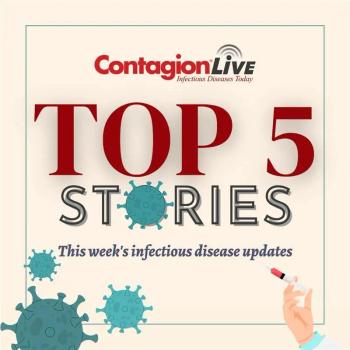
Considering the Impact of Crop Spraying and Antifungal Resistance
At the ASM Microbe conference, Mike Bromley, PhD, offers some insights on the importance of a One Health approach addressing the growing antifungal resistance to azoles and Aspergillus fumigatus because of the connection between crop spraying and the rise of resistance.
Earlier this year, the World Health Organization published its first-ever reports on therapies and diagnostics for fungal diseases. Fungal infections are increasing and the mortality rates can reach as high as 88% for fungi in the top ‘critical priority’ category of the WHO’s
If you look at 1 pathogenic fungus, Aspergillus fumigatus, more than 10 million people suffer from lung diseases caused by it.2 And what is especially concerning is first-line therapeutics for most of these infections, the class of antifungals, known as the azoles, are becoming more resistant.2
Interestingly, there is a connection between what would seemingly be 2 different distinctive areas and how they relate to one another. According to the Centers for Disease Control and Prevention (CDC), the concept of One Health is, “an approach that recognizes that the health of people is closely connected to the health of animals and our shared environment.” The federal agency writes the concept is not new but has become more relevant in recent years with the interactions between people, animals, plants, and our environment.3
One example of this interaction and where it is demonstrating known effects is the spraying of fungicides on crops and antifungal resistance in people. Mike Bromley, PhD, professor of Medical Mycology at the University of Manchester and director of the Manchester Fungal Infection Group has been studying this area and says it is vital to be thinking about the One Health approach to this problem. He will be presenting on this topic at the ongoing ASM Microbe Conference this week.4
“We have to think about the issues of One Health when we're thinking about antifungal resistance, and the reason for that is a lot of the resistance we see in the clinic is derived from the environment,” he said. “What's happening is that we're using really large amounts of the azole class of fungicides to treat plant pathogens of crops, and these azole fungicides are critically important for the protection of our crops, because without them, we wouldn't be able to generate enough food to sustain our populations. It's really important that the agricultural sector is able to use these fungicides, but the problem is that Aspergillus fumigatus, which is one of the human pathogens, resides in the same areas as some of these plant pathogens. So when we spray crops with these azole fungicides, Aspergillus fumigatus is there too. And because it's there in environments where azoles are there in quite high concentrations, you see the emergence of resistance in the environment, and then people breathe in the spores of Aspergillus and become infected with resistant strains before they're ever treated.”
One particular area that is problematic is compost heaps, explains Bromley.
“Aspergillus loves to grow when it's really, really warm, and in these compost heaps, Aspergillus thrives. Compost is basically taking all that waste biological plant material that has often been sprayed with fungicides, and concentrating that in 1 location. So you're getting high levels of drugs and you're getting Aspergillus growing very rapidly. So that's where resistance is emerging, and that's where we can make the biggest efforts in a One Health context to try and prevent the further emergence and spread of azole resistance in Aspergillus.
He says simply wetting compost heaps is one way to reduce Aspergillus growth.
Overall, in terms of looking at ways to combat resistance, Bromley says stewardship is a significant strategy.
“We're not necessarily talking about stewardship in the clinical sense. We're talking about stewardship in the environment—only using those antifungals or those fungicides when they're really needed in the environment, only spraying crops when they're needed, spraying at the right time, at the right concentrations, not overusing them in the environment,” Bromley said.
References
1. WHO issues its first-ever reports on tests and treatments for fungal infections. WHO press release. April 1, 2025. Accessed April 1, 2025.
https://www.who.int/news/item/01-04-2025-who-issues-its-first-ever-reports-on-tests-and-treatments-for-fungal-infections
2. van Rhijn N, Zhao C, Al-Furaiji N, et al. Functional analysis of the Aspergillus fumigatus kinome identifies a druggable DYRK kinase that regulates septal plugging [published correction appears in Nat Commun. 2024 Aug 20;15(1):7126. doi: 10.1038/s41467-024-50129-y.]. Nat Commun. 2024;15(1):4984. Published 2024 Jun 11. doi:10.1038/s41467-024-48592-8
3. About One Health. CDC. October 30, 2024. Accessed June 20, 2025.
https://www.cdc.gov/one-health/about/index.html
4. Antifungal drug resistance: A one health problem. Session AAR-IDS-201. Presented at ASM Microbe 2025. June 19-23, 2025. Los Angeles, CA.
Newsletter
Stay ahead of emerging infectious disease threats with expert insights and breaking research. Subscribe now to get updates delivered straight to your inbox.

















































































































































































































































































